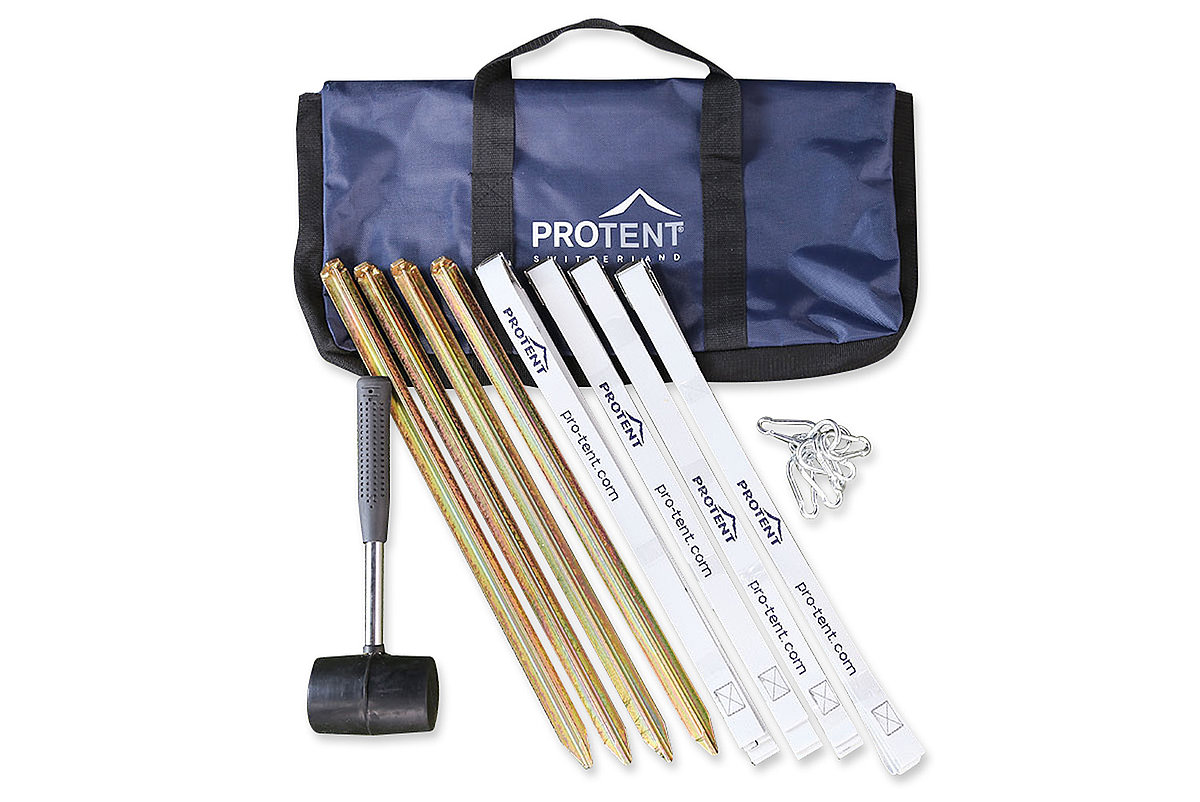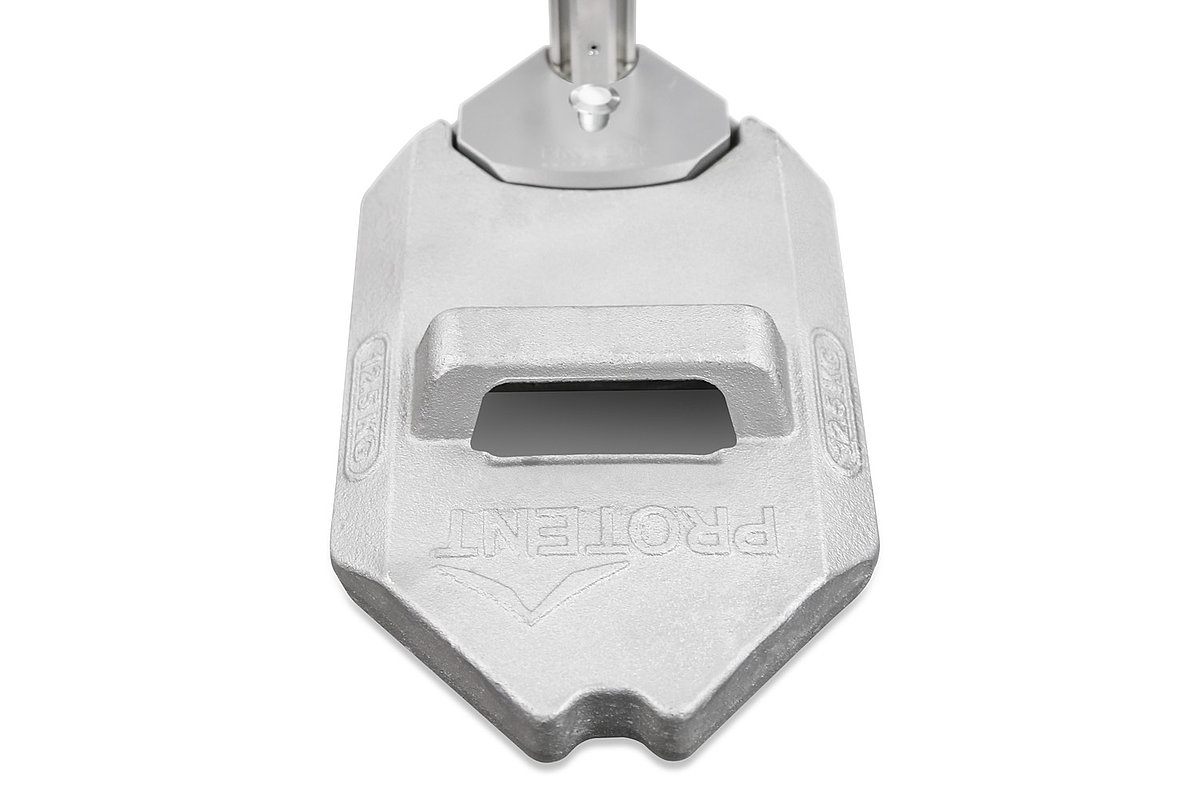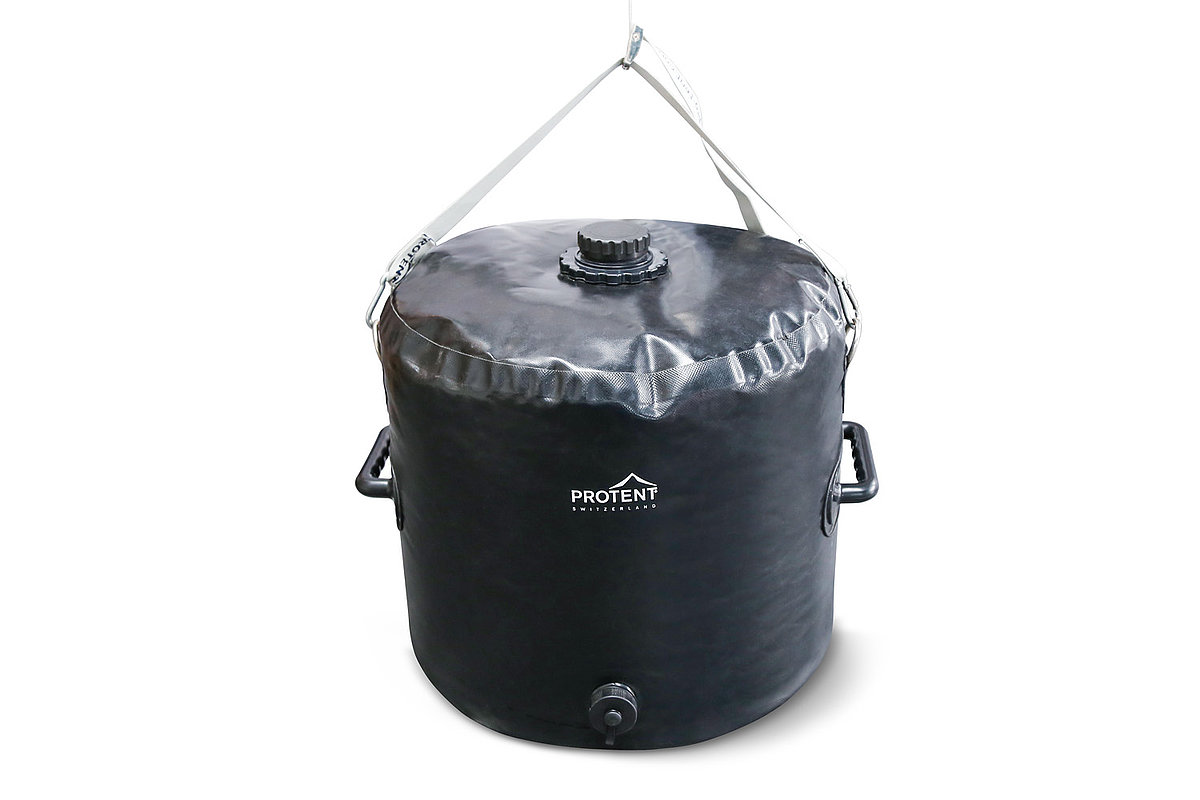Securing a folding pavilion
How to secure your folding tent in windy conditions
You can only fully benefit from the special robustness of Pro-Tent folding tents if you attach your folding pavilion correctly. Correct tensioning plays just as important a role as additional securing measures with which you can ensure the required stability in windy conditions. We explain what really matters when it comes to attaching your folding tent and how to secure it against the wind.
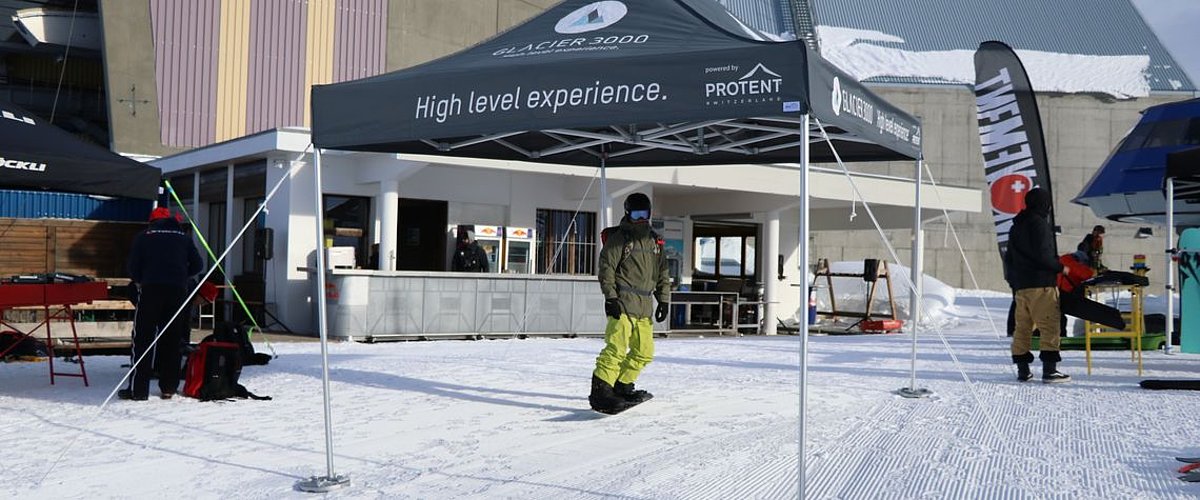
How to secure your folding by tensioning it correctly
When the wind picks up, you should make sure that your folding tent is properly tensioned. The best way to do this is to use your tensioning set, which is included as a standard accessory with Pro-Tent's wind-proof folding tents. For the Pro-Tent 2000 and Pro-Tent MODUL 4000 series, this consists of 30 cm long pegs and tensioning ropes with carabiners. Use these to secure your Pro-Tent folding tent against the wind.
For particularly demanding use cases, we offer a professional tensioning set as an accessory. This consists of 50 cm long, T-shaped pegs, a hammer and tensioning ropes featuring a quick-release function. The particularly robust Pro-Tent 5000 even comes with this set as standard.
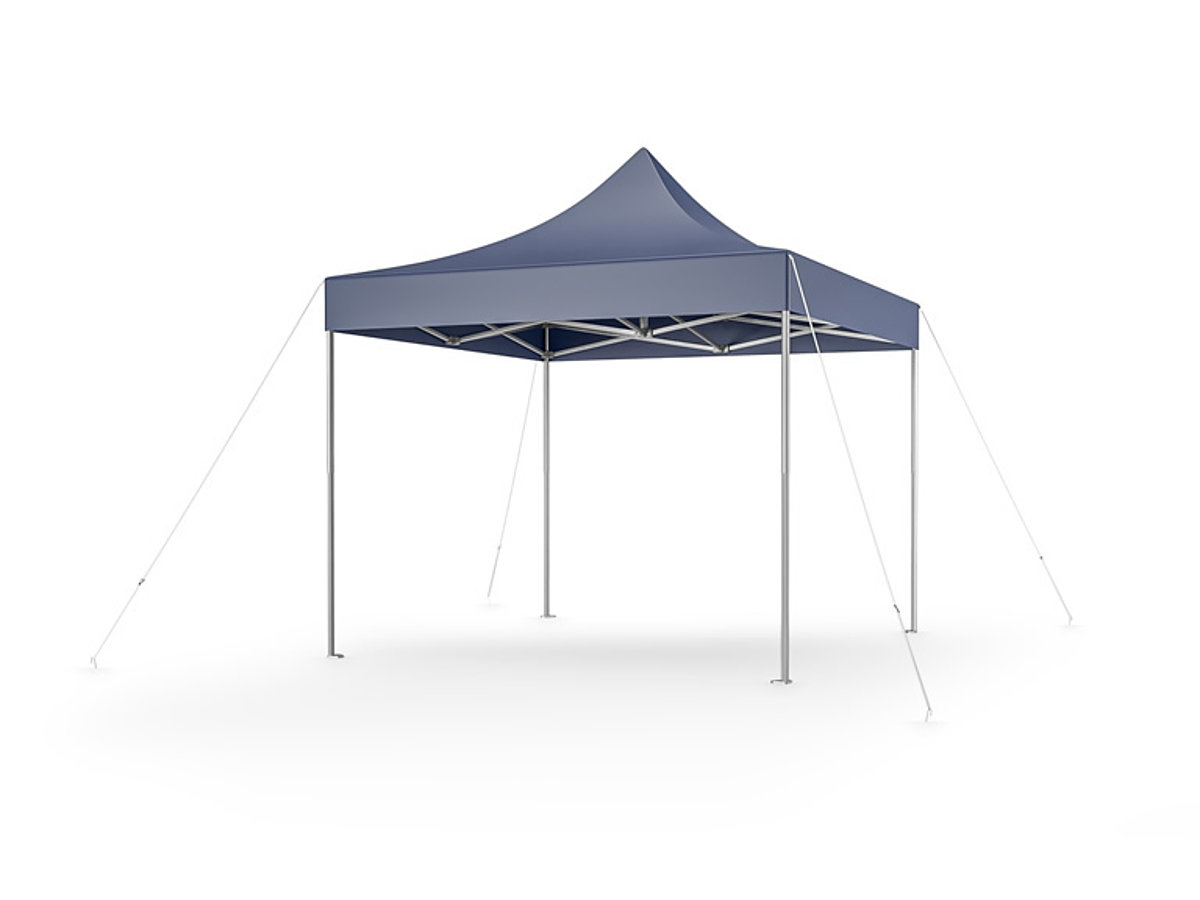

To achieve the best possible effect, you should tension your folding tent in a way that makes most sense with regard to physics. The tensioning ropes should lead away from all four corners of the folding tent at an angle of approx. 45 degrees.
Beforehand, it is important to check the ground conditions and ensure that the pegs are well anchored. If no pegs can be set (unsuitable ground), our water weights, which can be filled with 50 litres of water, are an alternative. Of course, other weights or fastening possibilities can also be used, which may be available in the surrounding area to fasten your folding tent properly.
CAUTION: The tensioning ropes must not be too tightly fastened. Tension only with moderate force so that the ropes do not sag. If it is windy, you must check from time to time whether the tensioning ropes are still holding firm - and readjust them if necessary or set the pegs again.
If the wind is light, it is sufficient to tension your folding tent using the flaps at the corners of the fabric roof. However, if the wind picks up, we strongly recommend tensioning your folding tent at the frame itself.
Guide the guy rope around the connector on the stand legs, close with the carabiner and tension outwards as usual.
When combined with side walls, the guy ropes are routed outwards are routed outwards between the valance and the side wall.
In the event of storms or very violent thunderstorms, it is generally better to dismantle folding tents for safety reasons.
Note: Tensioning is particularly effective and efficient, as it not only keeps your folding tent in place in windy conditions, but also prevents too much movement of your folding pavilion, which in the worst case could damage the construction.

Tension the tent roof with care to properly secure your folding tent
The roof of your folding tent must always be optimally tensioned. If there is a lack of tension, water pockets could form when it rains.
With Pro-Tent folding tents you don't have to worry about the tension of your fabric roof. Because these folding pavilions feature a gable compression spring in the gable. This means that the fabric roof is always kept perfectly taut automatically. In addition, the gable compression spring also absorbs the force of gusts, reducing the load on the folding tent.
Panel tensioners provide additional tension for the fabric roof
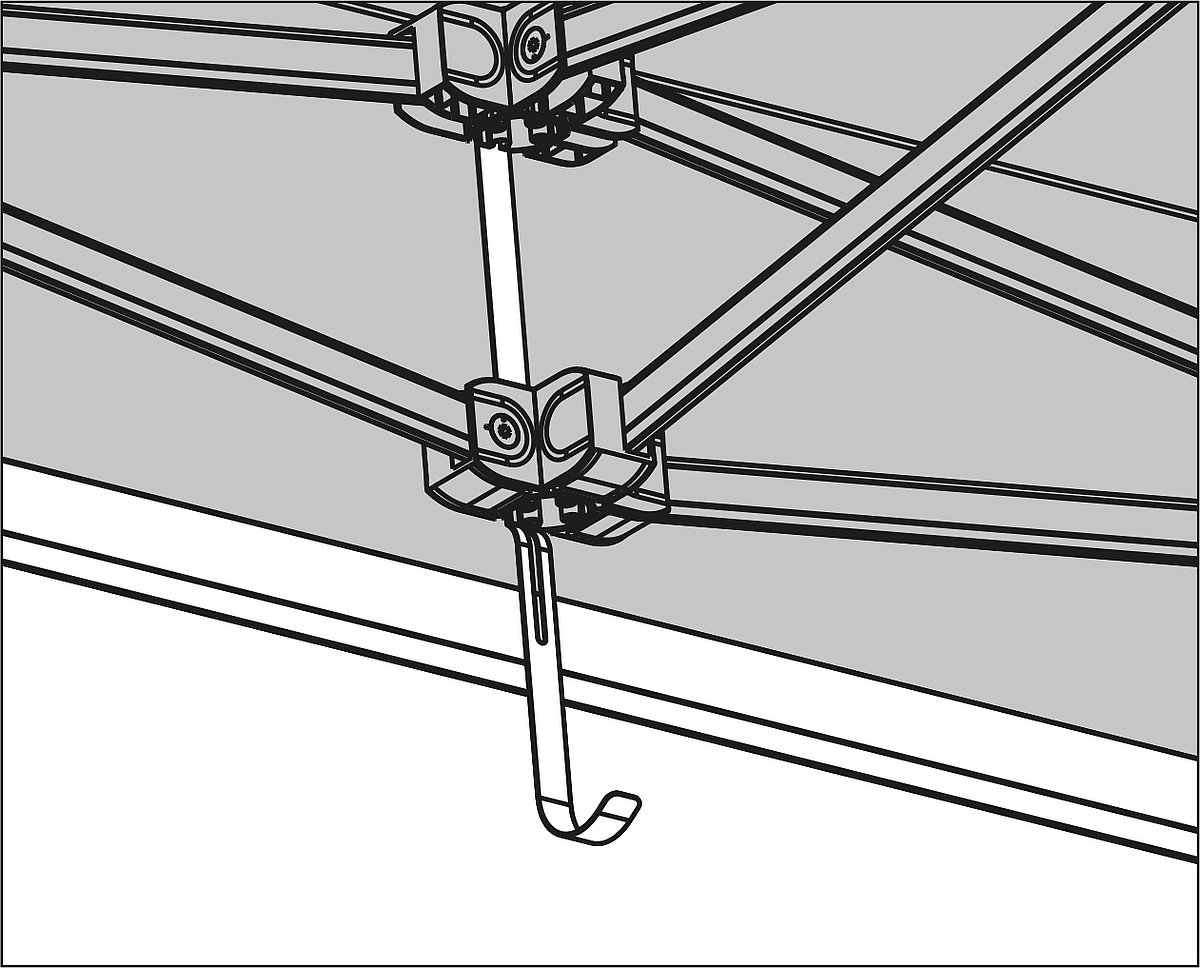
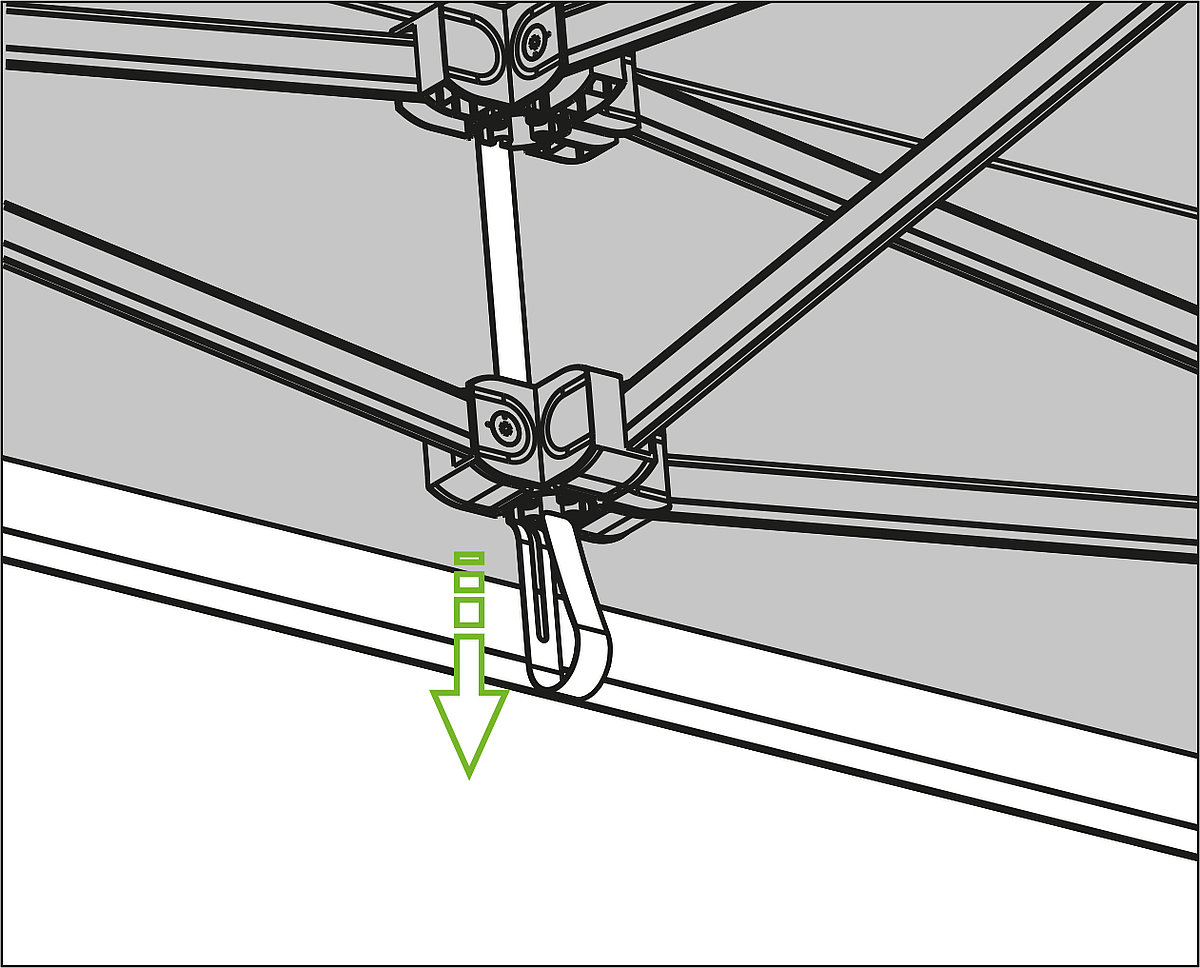
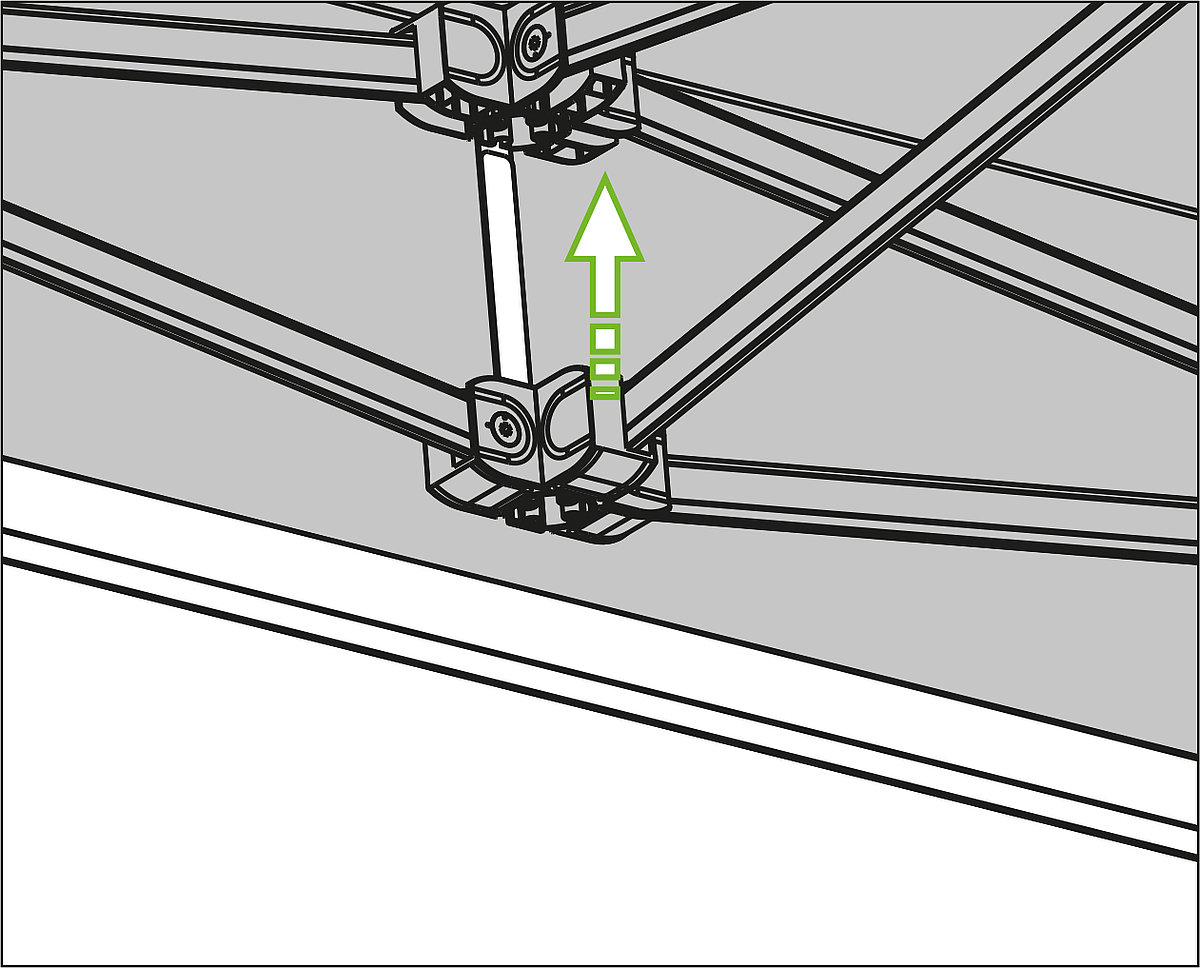
The fabric roof of Pro-Tent folding tents also features panel tensioners in the form of Velcro straps. These also prevent water pockets from forming in heavy rain and can be easily tensioned in just a few steps.
Pro-Tent accessories for securing your folding pavilion
All of our folding tent series come with high-quality tensioning options as standard. The Pro-Tent 2000 and Pro-Tent MODUL 4000 series include a robust tensioning set, while the particularly stable Pro-Tent 5000 comes with our professional tensioning set.
You will also find further accessories in Pro-Tent's diverse range for tensioning your folding tent optimally. You can order the above-mentioned professional tensioning set to supplement you tent’s security at any time. We also offer various weight plates (10 kg, 12.5 kg, 15 kg), special water weights (50 litres) and sand weights (10 kg).
You can stack some of the weight plates (up to six 12.5 kg weight plates per leg) or link them together (two 15 kg plates combined). The sand weight is attached to the stand leg and can thus be placed over a weight plate. Water weights, on the other hand, are a conceivable alternative if the ground is not suitable for pegs.
What wind force can a well-secured folding pavilion withstand?
|
Level |
km/h |
Knots |
|
|---|---|---|---|
|
0 |
0 - 1 |
0 |
No wind |
|
1 |
1 - 3 |
1 - 3 |
Weak breeze |
|
2 |
6 - 11 |
4 - 6 |
Weak wind |
|
3 |
12 - 19 |
7 - 10 |
Weak wind |
|
4 |
20 - 28 |
11 - 16 |
Moderate wind |
|
5 |
29 - 38 |
17 - 21 |
Strong breeze |
|
6 |
38 - 49 |
22 - 27 |
Strong wind |
|
7 |
50 - 61 |
28 - 33 |
Strong wind |
|
8 |
62 - 74 |
34 - 40 |
Storm |
|
9 |
75 - 88 |
41 - 47 |
Storm |
|
10 |
89 - 102 |
48 - 55 |
Severe storm |
|
11 |
103 - 117 |
56 - 63 |
Hurricane-like storm |
|
12 |
118 - 133 |
64 - 71 |
Hurricane |
|
13 |
134 - 149 |
72 - 80 |
Hurricane |
|
14 |
150 - 166 |
81 - 89 |
Hurricane |
|
15 |
167 - 183 |
90 - 98 |
Hurricane |
|
16 |
184 - 202 |
99 - 109 |
Hurricane |
|
17 |
> 202 |
> 109 |
Hurricane |
In low and medium winds, you do not have to worry about your folding tent if it is correctly tensioned and secured. Even stronger winds do not pose a problem for a robust folding tent, as long as it has been professionally secured.
Things become critical when the wind force reaches 8. This is what we call a real storm. The wind speed is in the range of 62-74 km/h. In such a storm, people should generally no longer be outside, because this can already be potentially life-threatening due to objects flying around.
Even a properly secured folding pavilion reaches its limits here. Since you are no longer safe even outside and should definitely go in search of a fortified building, it’s no use to you if a folding tent manufacturer guarantees you higher wind safety. Because even your folding pavilion cannot protect you from potentially life-threatening situations.
So keep an eye on the weather forecast when using your folding pavilion outdoors. This way you can take action early on and dismantly your folding tent if strong winds should come up. If you do get caught in a storm, a folding tent can usually be folded up quickly.
If there is not enough time for dismantling your entire folding tent, you can at least remove the side walls to reduce the attack surface before going in search of a safe place. If your folding tent is damaged in the storm, you can simply contact the manufacturer - and have spare parts sent to you for repairing the folding tent if necessary.
FAQ: Frequently asked questions about securing folding pavilions
A wind force of 8 or more is called a storm, which can be potentially life-threatening for people due to objects flying around. In general, Pro-Tent folding tents are constructed in such a way that they can be used up to this wind force when professionally attached using a tensioning set and weights.
However, as wind safety is influenced by other factors, such as the general condition of the tent, correct fastening or the ground conditions, we unfortunately cannot give any guarantee in the event of damage.
Even if a manufacturer advertises higher wind speeds, you should definitely not use your folding tent in such storms. You would put yourself in an great danger and your folding pavilion cannot protect you.
If your Pro-Tent folding tent has been damaged in a storm, we will be happy to assist you with repairs.
As a general rule, people should not be outside above a wind force of 8, as objects flying around can be potentially life-threatening. Accordingly, you should dismantle your folding pavilion well in advance – this is the only 100% certainty that no damage can occur. It is always the user and not the manufacturer who is responsible and therefore liable.
There are basically three ways to secure your folding tent: Tensioning, weighting and anchoring.
In concrete terms this means: You should tension your folding tent using tensioning straps and pegs or water weights according to our instructions. In light winds, weight plates or sand weights are usually sufficient. However, if the wind picks up or the weather is uncertain, you should fasten down your tent in any case.
If you use a combination of correct tensioning with straps, a well-tensioned tent roof and weight plates for weighting, you will get the maximum wind safety out of your folding tent.
Another tip for extra wind safety is removing the side walls. These offer additional surface area for gusts of wind and thus put strain on the folding tent frame.
Using these methods and in the right conditions, you can use your folding tent up to wind force 8 if you carry out all the securing steps correctly. Please bear in mind that a higher level of wind safety is of no practical use to you, as you should go in search of a fortified building in such high winds anyway, so as not to put yourself in danger due to objects flying around.

